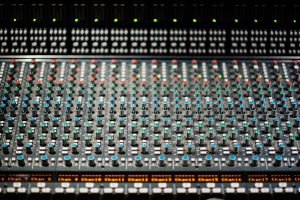Serial communication is basically the transmission or reception of data one bit at a time. Today’s computers generally address data in bytes or some multiple thereof. A byte contains 8 bits. A bit is basically either a logical 1 or zero. Every character on this page is actually expressed internally as one byte. The serial port is used to convert each byte to a stream of ones and zeroes as well as to convert streams of ones and zeroes to bytes. The serial port contains an electronic chip called Universal Asynchronous Receiver/Transmitter (UART) that actually does the conversion.
The serial port has many pins. We will discuss the transmit and receive pin first. Electrically speaking, whenever the serial port sends a logical one (1) a negative voltage is effected on the transmit pin. Whenever the serial port sends a logical zero (0) a positive voltage is effected. When no data is being sent, the serial port’s transmit pin’s voltage is negative (1) and is said to be in the MARK state. Note that the serial port can also be forced to keep the transmit pin at a positive voltage (0) and is said to be the SPACE or BREAK state. (The terms MARK and SPACE are also used to simply denote a negative voltage (1) or a positive voltage(0) at the transmit pin respectively).
When transmitting a byte, the UART (serial port) first sends a START BIT which is a positive voltage (0), followed by the data (general 8 bits, but could be 5, 6, 7, or 8 bits) followed by one or two STOP BITs which is a negative(1) voltage. The sequence is repeated for each byte sent.
At this point, you may want to know what is the duration of a bit. In other words, how long does the signal stay in a particular state to define a bit? The answer is simple. It is dependent on the baud rate. The baud rate is the number of times the signal can switch states in one second. Therefore, if the line is operating at 9600 baud, the line can switch states 9,600 times per second. This means each bit has the duration of 1/9600 of a second or about 100 µsec.
When transmitting a character there are other characteristics other than the baud rate that must be known or that must be setup. These characteristics define the entire interpretation of the data stream.
The first characteristic is the length of the byte that will be transmitted. This length, in general, can be anywhere from 5 to 8 bits.
The second characteristic is parity. The parity characteristic can be even, odd, mark, space, or none. If even parity, then the last data bit transmitted will be a logical 1 if the data transmitted had an even amount of 0 bits. If odd parity, then the last data bit transmitted will be a logical 1 if the data transmitted had an odd amount of 0 bits. If MARK parity, then the last transmitted data bit will always be a logical 1. If SPACE parity, then the last transmitted data bit will always be a logical 0. If no parity then there is no parity bit transmitted.
A third characteristic is a number of stop bits. This value, in general, is 1 or 2.






